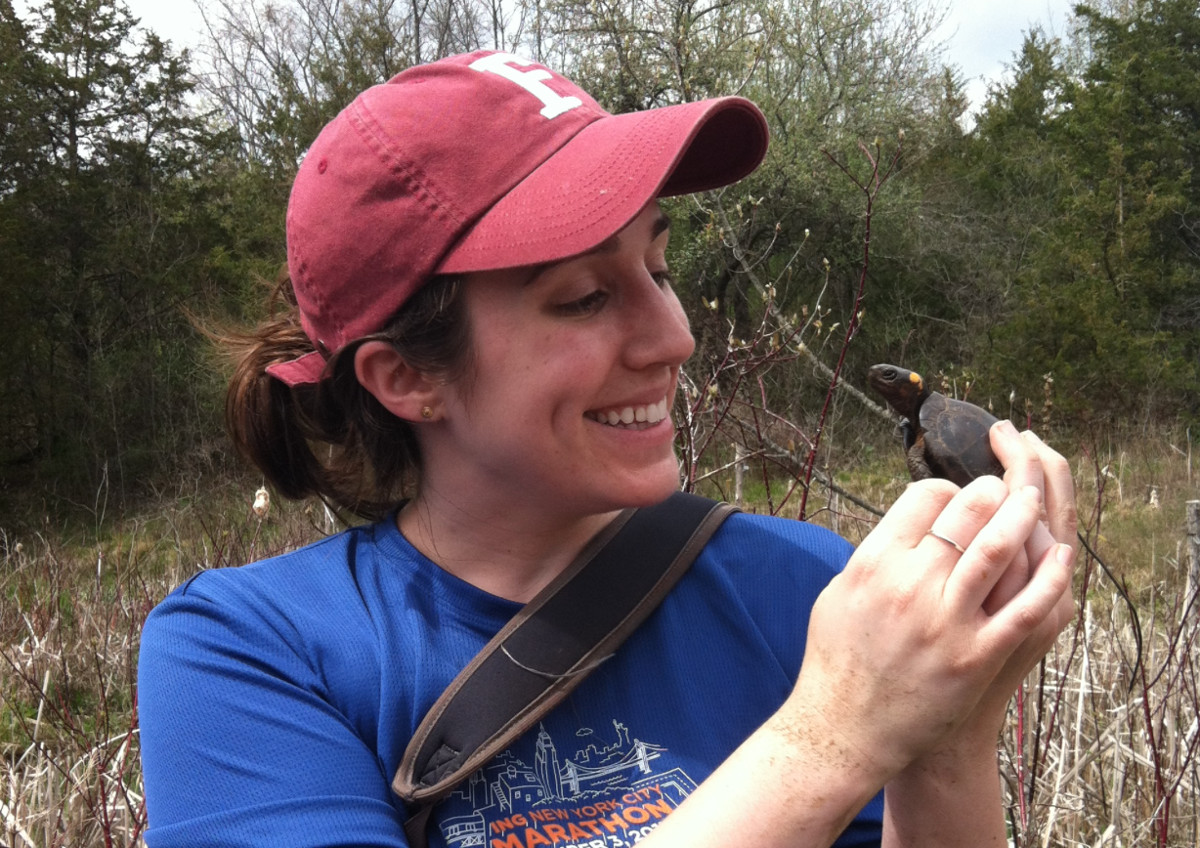COURSE AUTHOR
Suzanne Macey

Dr. Suzanne Macey is the Manager of the Network of Conservation Educators and Practitioners (NCEP) and a Biodiversity Scientist at the Center for Biodiversity and Conservation at the American Museum of Natural History.
Suzanne grew up in western New York, catching crayfish in her neighborhood’s creek. But it wasn’t until her sophomore year of college when she grasped that working in the field was a possible career. At the age of 20, after a student trip to Costa Rica through the Canisius College Ambassadors for Conservation, Suzanne wrote, “the one thing I’ll never forget will be the interconnected nature of the rainforests. Like a giant puzzle, the mammals, the birds, the insects, the trees, and even the fungi all fit together. We are also part of this puzzle and it is our responsibility to make decisions and conserve these wonderful tropical ecosystems.”
“Looking back on that quote now makes me smile,” Suzanne reflects. “I remember that wide-eyed, younger version of myself awakening to a passion that would lead to my future career.” After returning from that trip, Suzanne and her team members participated in the second (arguably, more important) part of the program, which was sharing their experience and knowledge. “We created a website, authored and implemented educational materials, and acted as docents at the Buffalo Zoo – collectively reaching thousands of people.”
Since then, Suzanne has intertwined her love of science and nature with conservation and education. On the research side, she mainly studies the behavioral ecology, health, and conservation genetics of wild and endangered species. Some past projects have focused on hippos in Ghana, harbor seals in the Netherlands, shorebirds on Cape Cod, little blue penguins in New Zealand, bog turtles in New York State, and radiated tortoises of Madagascar. “It might seem like a random list,” she says, “but in reality, the common thread in these projects has been understanding the ecology of a species and then applying that understanding to conservation action.”
On the education side, Suzanne has taught and developed classes for students of all ages, from toddlers to senior citizens. In college at Fordham University, Suzanne ran workshops and classes at community centers across the Bronx and Manhattan, and then became a museum educator at the Buffalo Museum of Science. After a short stint as a zookeeper, she started a Ph.D. program in Biology at Fordham University, which allowed her to teach undergraduate biology courses.
“I went back for my Ph.D. because I love research, being part of the scientific process, and dedicating my time to conservation efforts. It wasn’t until I was almost finished with my degree that I appreciated how much I love sharing my passion about the natural world and how my efforts to improve education could have lasting and meaningful results.”
Since graduating in 2015, Suzanne has acted as the Science Editorial Fellow and now Manager for the Network of Conservation Educators and Practitioners (NCEP), an initiative of the American Museum of Natural History’s Center for Biodiversity and Conservation (CBC). She leads the editorial process for biodiversity conservation teaching and learning modules, the publication Lessons in Conservation, and other educational materials. Suzanne also contributes to NCEP's professional development events for teachers and students and to curriculum development for programs in AMNH's Education Department and at Columbia University.
“In addition to all my responsibilities as NCEP manager, I’ve been fortunate to be able to continue teaching in the classroom, from field-based courses through Columbia University’s Summer Ecosystem Experiences for Undergraduates to afterschool Conservation Biology courses for high school students.” Suzanne also hasn’t stopped doing conservation research. Since 2012, Suzanne has mentored high school students doing independent research projects through the AMNH Science Research Mentoring Program. “Last year my students determined health metrics of Burmese star tortoises to help conservation managers decide whether confiscated tortoises should be released back into the wild. This year my students will be using field data and modeling to determine whether protecting bog turtle nests from predators is a viable and practical conservation tool.” And the next year? “Who knows, but I look forward to working with and learning from my students whatever the project may be.”